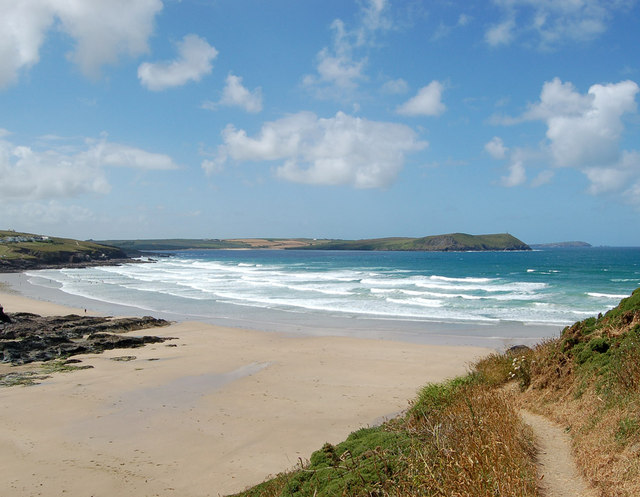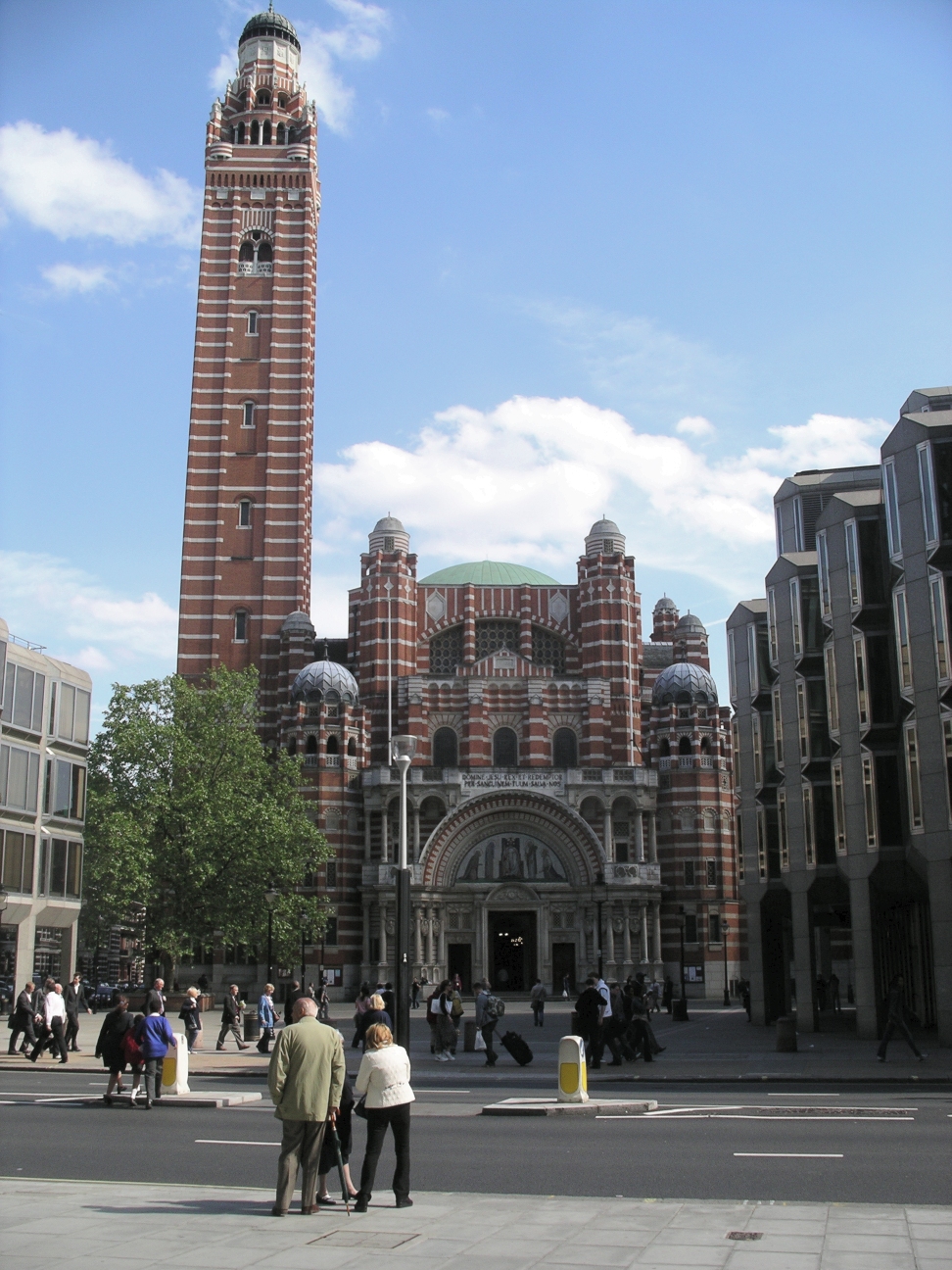|
New Polzeath
New Polzeath ( kw, Polsegh Nowyth, meaning ''new Polzeath'') is a coastal settlement immediately north-east of Polzeath in north Cornwall, England, United Kingdom. It is situated approximately north-northwest of Wadebridge at .Ordnance Survey: Landranger map sheet 200 ''Newquay & Bodmin'' The main street in New Polzeath is Atlantic Terrace which faces across the bay. The terrace was built in 1898. The area of New Polzeath inland of the terrace was developed later. An estate of holiday homes was built in the last few years. The National Trust owns land to the west and north of New Polzeath and this curtails further development. New Polzeath has access to Polzeath beach at low water; there is also access to Pentireglaze beach, a smaller beach. The road to New Polzeath connects with the road into Polzeath over a mile east of the villages so although the places are contiguous, driving between them means a 2-mile trip (1mile if small lane is taken past Lundynant camp site). Alt ... [...More Info...] [...Related Items...] OR: [Wikipedia] [Google] [Baidu] |
Laurence Binyon
Robert Laurence Binyon, CH (10 August 1869 – 10 March 1943) was an English poet, dramatist and art scholar. Born in Lancaster, England, his parents were Frederick Binyon, a clergyman, and Mary Dockray. He studied at St Paul's School, London and at Trinity College, Oxford, where he won the Newdigate Prize for poetry in 1891. He worked for the British Museum from 1893 until his retirement in 1933. In 1904 he married the historian Cicely Margaret Powell, with whom he had three daughters, including the artist Nicolete Gray. Moved by the casualties of the British Expeditionary Force in 1914, Binyon wrote his most famous work "For the Fallen", which is often recited at Remembrance Sunday services in the UK, Australia, New Zealand and Canada. In 1915, he volunteered as a hospital orderly in France and afterwards worked in England, helping to take care of the wounded of the Battle of Verdun. He wrote about these experiences in ''For Dauntless France''. After the war, he continued ... [...More Info...] [...Related Items...] OR: [Wikipedia] [Google] [Baidu] |
Villages In Cornwall
A village is a clustered human settlement or community, larger than a hamlet but smaller than a town (although the word is often used to describe both hamlets and smaller towns), with a population typically ranging from a few hundred to a few thousand. Though villages are often located in rural areas, the term urban village is also applied to certain urban neighborhoods. Villages are normally permanent, with fixed dwellings; however, transient villages can occur. Further, the dwellings of a village are fairly close to one another, not scattered broadly over the landscape, as a dispersed settlement. In the past, villages were a usual form of community for societies that practice subsistence agriculture, and also for some non-agricultural societies. In Great Britain, a hamlet earned the right to be called a village when it built a church. [...More Info...] [...Related Items...] OR: [Wikipedia] [Google] [Baidu] |
Isles Of Scilly
The Isles of Scilly (; kw, Syllan, ', or ) is an archipelago off the southwestern tip of Cornwall, England. One of the islands, St Agnes, is the most southerly point in Britain, being over further south than the most southerly point of the British mainland at Lizard Point. The total population of the islands at the 2011 United Kingdom census was 2,203. Scilly forms part of the ceremonial county of Cornwall, and some services are combined with those of Cornwall. However, since 1890, the islands have had a separate local authority. Since the passing of the Isles of Scilly Order 1930, this authority has had the status of a county council and today is known as the Council of the Isles of Scilly. The adjective "Scillonian" is sometimes used for people or things related to the archipelago. The Duchy of Cornwall owns most of the freehold land on the islands. Tourism is a major part of the local economy, along with agriculture—particularly the production of cut flowers. ... [...More Info...] [...Related Items...] OR: [Wikipedia] [Google] [Baidu] |
Roman Catholic Diocese Of Plymouth
The Roman Catholic Diocese of Plymouth is a Latin Church Roman Catholic diocese in England. The episcopal see is in the city of Plymouth, Devon, where the bishop's seat (cathedra) is located at the Cathedral Church of St Mary and St Boniface. History Erected as the Diocese of Plymouth in 1850 by Pope Pius IX, from the Apostolic Vicariate of the Western District, the diocese has remained jurisdictionally constant since. Since 1965, the diocese has been a suffragan see of the Ecclesiastical Province of Southwark; before then, from 1850 to 1911 it was in the Province of Westminster, then from 1911 to 1965 in the Province of Birmingham. Details The diocese covers the counties of Cornwall, Devon and Dorset, stretching from Penzance and the Isles of Scilly in the west, to parts of Bournemouth in the east. It is divided into five deaneries: Cornwall, Dorset, Exeter, Plymouth, and Torbay. There are chaplaincies at the universities of Bournemouth, Exeter and Plymouth. The diocese inclu ... [...More Info...] [...Related Items...] OR: [Wikipedia] [Google] [Baidu] |
Bernard Griffin
Bernard William Griffin (21 February 1899 – 19 August 1956) was an English cardinal of the Roman Catholic Church. He served as Archbishop of Westminster from 1943 until his death, and was elevated to the cardinalate in 1946 by Pope Pius XII. Biography Bernard and his twin brother Basil were born in Birmingham to William and Helen (née Swadkins) Griffin. His father was a bicycle manufacturer, Birmingham City councillor and justice of the peace."Surprise" ''''. (3 January 1944). When the broke out ... [...More Info...] [...Related Items...] OR: [Wikipedia] [Google] [Baidu] |
Archbishop Of Westminster
The Archbishop of Westminster heads the Roman Catholic Diocese of Westminster, in England. The incumbent is the metropolitan of the Province of Westminster, chief metropolitan of England and Wales and, as a matter of custom, is elected president of the Catholic Bishops' Conference of England and Wales, and therefore ''de facto'' spokesman of the Catholic Church in England and Wales. All previous archbishops of Westminster have become cardinals. Although all the bishops of the restored diocesan episcopacy took new titles, like that of Westminster, they saw themselves in continuity with the pre-Reformation Church and post-Reformation vicars apostolic and titular bishops. Westminster, in particular, saw itself as the continuity of Canterbury, hence the similarity of the coats of arms of the two sees, with Westminster believing it has more right to it since it features the pallium, a distinctly Catholic symbol of communion with the Holy See. History With the gradual abolition of ... [...More Info...] [...Related Items...] OR: [Wikipedia] [Google] [Baidu] |
Ode Of Remembrance
"For the Fallen" is a poem written by Laurence Binyon. It was first published in ''The Times'' in September 1914. Over time, the third and fourth stanzas of the poem (usually now just the fourth) have been claimed as a tribute to all casualties of war, regardless of state. This selection of the poem is often taken as an ode that is often recited at Remembrance Day services, and is what the term "Ode of Remembrance" usually refers to. Background Laurence Binyon (10 August 1869 – 10 March 1943), a British poet, was described as having a "sober" response to the outbreak of World War I, in contrast to the euphoria many others felt (although he signed the "Author's Declaration" that defended British involvement in the war, appearing in ''The New York Times'' on 18 September with 54 other British authors—including Thomas Hardy, Arthur Conan Doyle, and H.G. Wells). A week after the war began in 1914, Binyon published his first war poem, " The Fourth of August" in ''The Ti ... [...More Info...] [...Related Items...] OR: [Wikipedia] [Google] [Baidu] |
Pentire Head
Pentire Head ( kw, Penn Tir, meaning "headland") is a headland and peninsula on the Atlantic coast in North Cornwall, England, and is about one mile square. The headland projects north-west with Pentire Point at its north-west corner and The Rumps promontory at its north-east corner. Etymology The origin of the name is from Cornish ''penn'' (head) and ''tir'' (land): another headland with the name Pentire is further west near Crantock. Geography Pentire Point and Stepper Point stand at either side of the mouth of the River Camel estuary (Pentire to the north-east, Stepper to the south-west). To the south of Pentire Point is the small seaside resort of Polzeath. The coastline around the headland is owned by the National Trust, although the bulk of the headland itself is let to Pentire Farm. The entire headland forms the Pentire Peninsula Site of Special Scientific Interest, designated for its geology and flora and fauna including nationally rare plants. Important examples noted ... [...More Info...] [...Related Items...] OR: [Wikipedia] [Google] [Baidu] |
Tide
Tides are the rise and fall of sea levels caused by the combined effects of the gravity, gravitational forces exerted by the Moon (and to a much lesser extent, the Sun) and are also caused by the Earth and Moon orbiting one another. Tide tables can be used for any given locale to find the predicted times and amplitude (or "tidal range"). The predictions are influenced by many factors including the alignment of the Sun and Moon, the #Phase and amplitude, phase and amplitude of the tide (pattern of tides in the deep ocean), the amphidromic systems of the oceans, and the shape of the coastline and near-shore bathymetry (see ''#Timing, Timing''). They are however only predictions, the actual time and height of the tide is affected by wind and atmospheric pressure. Many shorelines experience semi-diurnal tides—two nearly equal high and low tides each day. Other locations have a diurnal cycle, diurnal tide—one high and low tide each day. A "mixed tide"—two uneven magnitude ... [...More Info...] [...Related Items...] OR: [Wikipedia] [Google] [Baidu] |
National Trust For Places Of Historic Interest Or Natural Beauty
The National Trust, formally the National Trust for Places of Historic Interest or Natural Beauty, is a charity and membership organisation for heritage conservation in England, Wales and Northern Ireland. In Scotland, there is a separate and independent National Trust for Scotland. The Trust was founded in 1895 by Octavia Hill, Sir Robert Hunter and Hardwicke Rawnsley to "promote the permanent preservation for the benefit of the Nation of lands and tenements (including buildings) of beauty or historic interest". It was given statutory powers, starting with the National Trust Act 1907. Historically, the Trust acquired land by gift and sometimes by public subscription and appeal, but after World War II the loss of country houses resulted in many such properties being acquired either by gift from the former owners or through the National Land Fund. Country houses and estates still make up a significant part of its holdings, but it is also known for its protection of wild lands ... [...More Info...] [...Related Items...] OR: [Wikipedia] [Google] [Baidu] |





